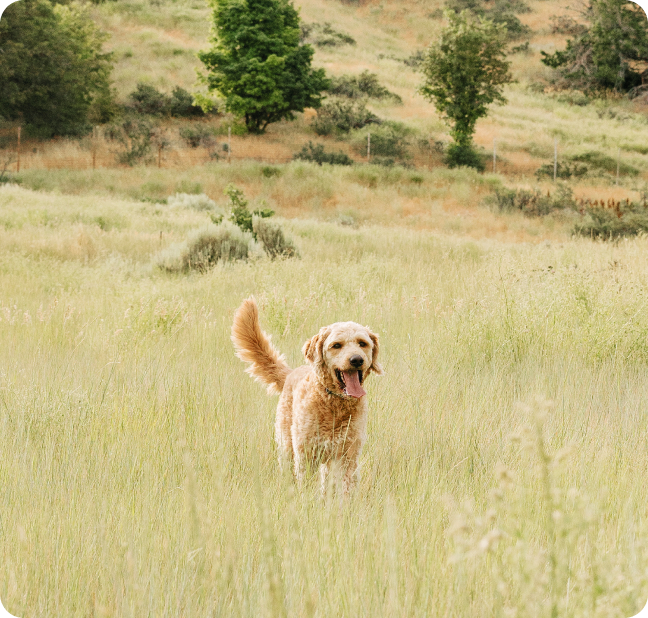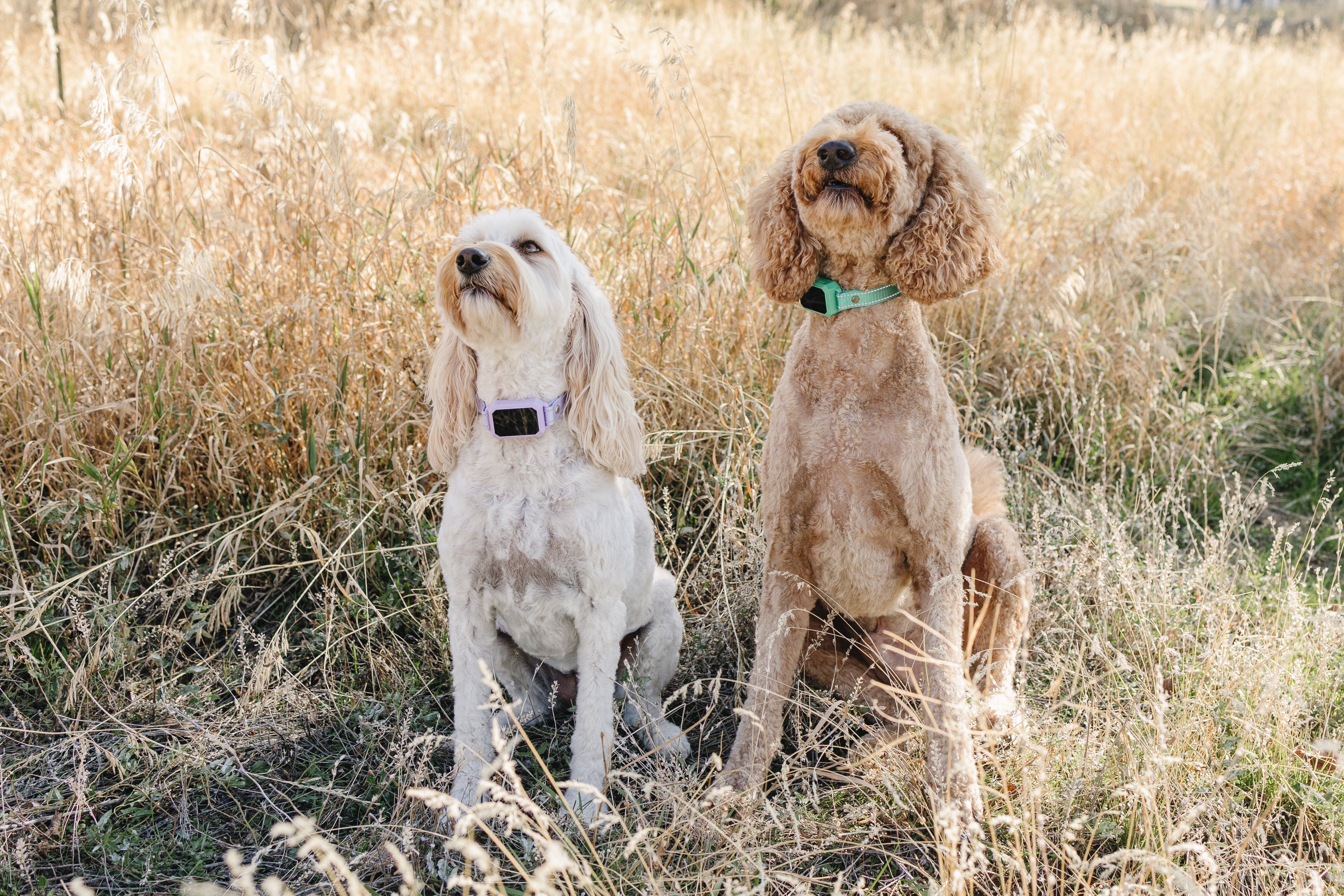Every dog deserves the freedom to explore safely, whether in the backyard, on a weekend trip, or inside your home. Traditional fences can be costly or impractical for certain properties, which is why wireless GPS dog fences have become a popular solution among pet owners.
Instead of building physical barriers, these systems use satellite or radio signals to create invisible boundaries that your dog learns to respect through gentle alerts and corrections. But not all systems are alike. Some are designed for indoor use, others for outdoor containment, and many now offer portable options for travel and flexibility.
This guide breaks down the differences between indoor vs outdoor vs portable dog fences, explains how each works, and helps you choose the best system for your dog and lifestyle.
What Is a Wireless GPS Dog Fence?
A wireless GPS dog fence uses satellite signals to mark a virtual boundary without requiring underground wires or physical fencing. The system includes a GPS-enabled dog collar that connects with a base unit or app. When your dog approaches the set boundary, the collar emits a warning beep, vibration, or mild static correction, teaching them to stay within the safe zone.
Modern systems, like those from PawTronic, allow owners to customize boundaries directly through their phone, monitor their dog’s location in real time, and adjust correction levels for each dog’s temperament. Learn how to set up a wireless dog fence system correctly .
Indoor Dog Fence: Safe Boundaries Inside Your Home
Best for: Apartments, small houses, or keeping dogs out of restricted rooms.
An indoor dog fence helps manage your pet’s movement within the home. Rather than satellites, these systems rely on short-range radio frequencies or infrared sensors to create off-limit zones. They’re perfect for keeping your dog away from the kitchen, nursery, or expensive furniture.
How It Works
Indoor fences use a transmitter placed in a specific area (like a doorway or under a couch) that emits a containment signal. When your dog’s collar detects that signal, it triggers a warning beep or vibration, teaching your dog to stay away.
Advantages
-
Quick setup: Plug in or position transmitters, no tools required.
-
Ideal for training: Helps teach boundaries in multi-pet households.
-
Safe and humane: Uses tone and vibration corrections rather than shocks.
Considerations
-
Limited to smaller indoor areas.
-
Not suitable for outdoor containment.
-
Works best for smaller or calm dogs rather than highly active breeds.
Tip: Some GPS collars, like PawTronic’s hybrid systems, can switch between indoor and outdoor modes, making them perfect if your dog moves between the house and yard regularly.
Outdoor Dog Fence: Wide-Area Containment for Active Dogs
Best for: Large yards, gardens, and open properties.
If your dog loves to run, play, or explore outdoors, a wireless outdoor fence provides freedom without the need for visible barriers. The latest systems, such as the PawTronic GPS Fence, use advanced GPS technology to create highly accurate boundaries, even on uneven terrain or irregularly shaped lots.
How It Works
Outdoor wireless fences don’t rely on buried wires. Instead, you set a digital perimeter using an app or handheld device. Once activated, the collar tracks your dog’s position via GPS and sends alerts if they near or cross the safe zone.
Advantages
-
Custom shapes: Define unique boundaries that match your property layout.
-
Large coverage area: Perfect for wide spaces or farms.
-
Low maintenance: No digging, wiring, or repairs.
-
Real-time tracking: Many systems allow owners to see their dog’s location instantly.
Considerations
-
GPS accuracy can vary slightly depending on terrain, buildings, or weather.
-
Dogs require consistent boundary training to learn safe zones.
-
Battery life and regular collar checks are essential for reliability.
PawTronic’s GPS Fence combines precision mapping with smart correction settings and a waterproof collar, giving pet owners peace of mind, no matter the conditions.
Portable Dog Fence: Safety Wherever You Go
Best for: Travellers, campers, and families who move frequently.
A portable dog fence offers flexibility for pet owners who don’t want to sacrifice safety while on the move. These fences can take two forms: foldable physical barriers or wireless GPS fences that can be reprogrammed anywhere.
How It Works
With a portable GPS system, you simply select a new location on your app or base unit, set a temporary boundary, and the collar immediately recognises the new containment zone. This makes it ideal for use at campsites, holiday rentals, or parks.
Advantages
-
Lightweight and compact: Easy to pack and transport.
-
Fast setup: Boundaries can be created in minutes.
-
Customizable zones: Reset or resize your virtual fence anytime.
-
Perfect for outdoor adventures: Keeps your dog secure without leashes or tethers.
Considerations
-
Portable playpens offer limited range.
-
GPS versions require strong satellite connectivity for best accuracy.
-
Some systems may need recalibration in new environments.
The PawTronic Portable GPS Dog Fence offers quick boundary setup via mobile app and supports multiple dogs, ensuring safe, off-leash fun wherever you travel.
Indoor vs Outdoor vs Portable Dog Fence: A Quick Comparison
This table shows how different dog fence options stack up against each other:
|
Feature |
Indoor Fence |
Outdoor Fence |
Portable Fence |
|
Location |
Inside home |
Yard, garden, open property |
Anywhere (travel, camping) |
|
Technology |
Short-range sensors or transmitters |
GPS or radio signal |
GPS-based or foldable physical barrier |
|
Setup Time |
5–10 minutes |
20–30 minutes |
5–15 minutes |
|
Coverage Area |
Small |
Medium to large |
Variable (depends on model) |
|
Power Source |
Plug-in or battery |
Rechargeable collar, base unit |
Rechargeable collar or batteries |
|
Ideal Users |
Apartment dwellers, indoor pets |
Homeowners, large properties |
Travellers, RV owners, campers |
Which Dog Fence Is Right for You?
The right fence depends on your lifestyle, your dog’s temperament, and how much freedom you want them to have.
-
Choose an indoor fence if your dog primarily stays indoors and you want to restrict access to certain rooms.
-
Choose an outdoor GPS fence if you have a yard or open space and want precise, maintenance-free containment.
-
Choose a portable fence if you travel often or need a flexible, temporary solution.
If you’re looking for the most versatile and long-term option, a wireless GPS dog fence from PawTronic offers the best of all worlds: customizable boundaries, portability, and reliable safety backed by advanced technology.
Training Tips for Success
No matter which system you choose, training is key to helping your dog understand invisible fence boundaries.
-
Start slowly: Introduce your dog to the boundary while on a leash.
-
Use visual markers: Flags or cones help them associate areas with limits.
-
Reinforce positive behavior: Reward your dog for staying within the safe zone.
-
Test regularly: Walk the boundary every few weeks to ensure consistent signal strength.
Consistency with training techniques builds confidence, and soon, your dog will respect their boundaries naturally.
Benefits of Choosing a PawTronic GPS Fence
-
No digging or wiring: Easy setup with app-controlled boundaries.
-
Accurate GPS tracking: Keeps your pet within safe zones.
-
Waterproof, durable collars: Designed for all weather conditions.
-
Customisable alerts: Adjust tone, vibration, or correction levels.
-
Multi-dog support: Manage several collars from one base unit.
-
Long battery life: Built for daily use and outdoor adventures.
PawTronic’s system is built to make pet containment simple for everyone, from tech beginners to professional trainers, so your dog can enjoy freedom while you enjoy peace of mind.
Final Thoughts
Choosing between an indoor, outdoor, or portable dog fence depends on where and how your dog spends their time. But with modern GPS technology, you don’t have to pick just one.
PawTronic’s Wireless GPS Dog Fence combines the flexibility of portable systems, the precision of outdoor GPS tracking, and the convenience of indoor control, all in one smart, user-friendly solution.
Give your dog the gift of safe freedom, and give yourself the confidence that comes with advanced, reliable protection.
Frequently Asked Questions
How to install a GPS dog fence?
Begin by unpacking your system, charging the collar, and downloading the PawTronic app. Walk your property to set virtual boundary points or draw them on the app map. Once saved, test the boundary by walking the collar around the edge and confirming alerts before training your dog.
Do GPS dog fences really work?
Yes. Modern GPS dog fences are highly accurate and reliable when properly set up. They use multiple satellite connections to maintain precise boundaries and alert your dog instantly if they approach the edge of the safe zone.
Does an invisible fence work when the power goes out?
Most GPS systems, including PawTronic, run on rechargeable batteries rather than household power. As long as the collar and base unit are charged, your fence will continue to function during power outages.
Does a wireless dog fence have to be a circle?
Not anymore. With advanced GPS technology, you can create custom-shaped boundaries that follow your property’s layout: square, rectangular, or irregular. PawTronic allows you to draw or walk the perimeter of your wireless dog fence for exact coverage.



Leave a comment
This site is protected by hCaptcha and the hCaptcha Privacy Policy and Terms of Service apply.